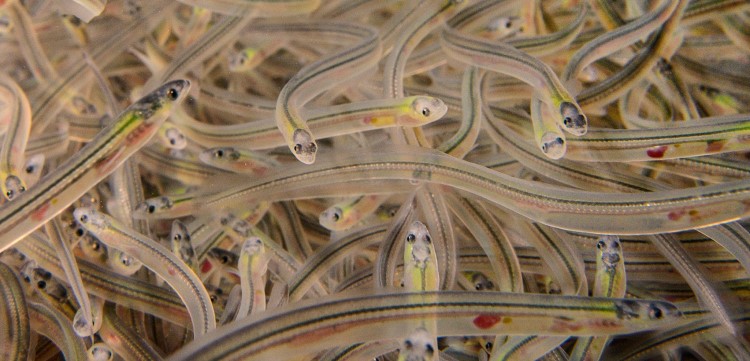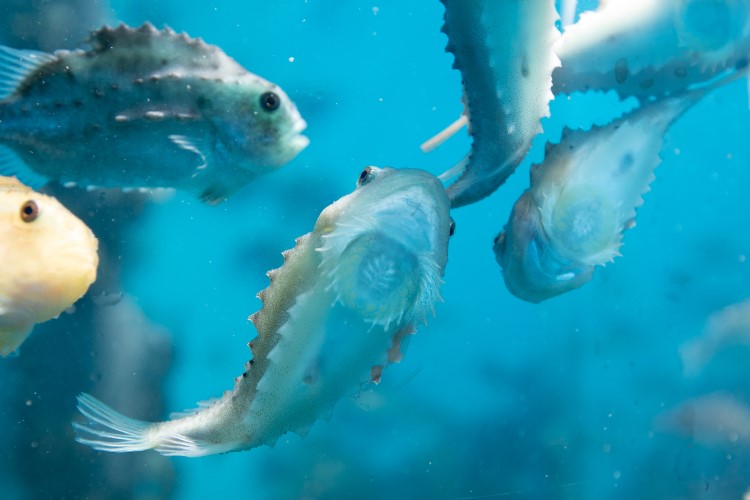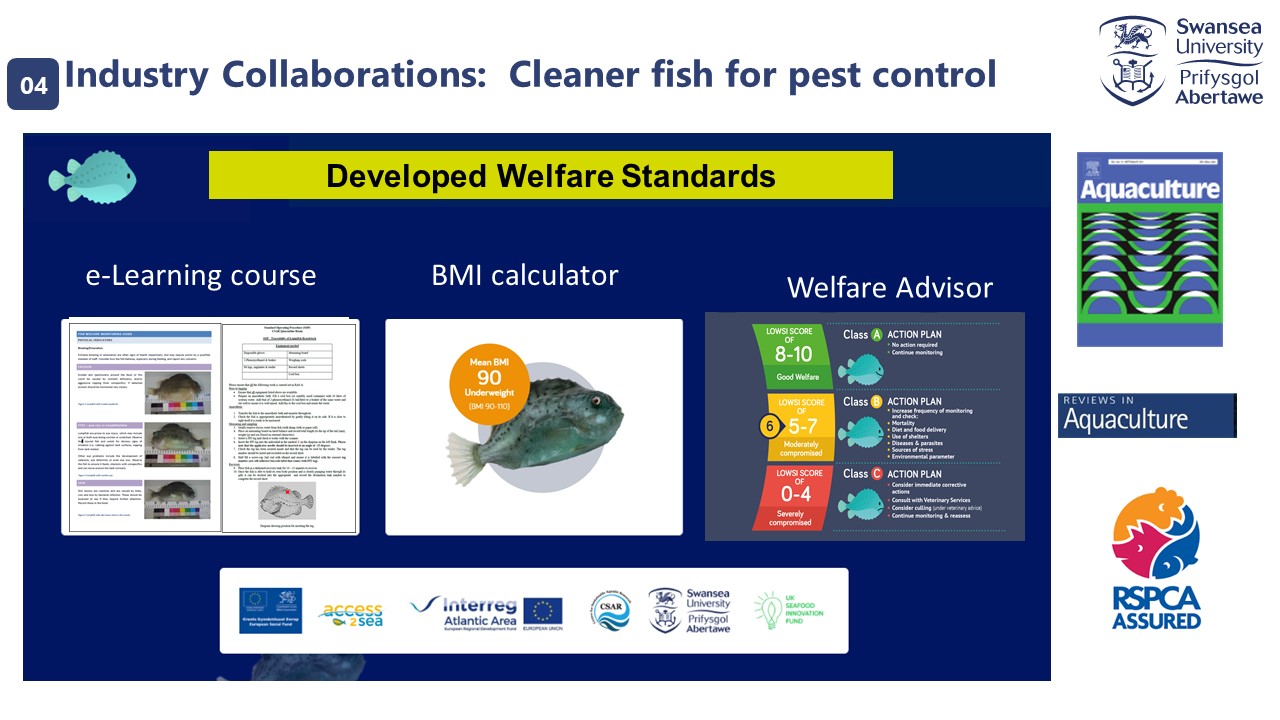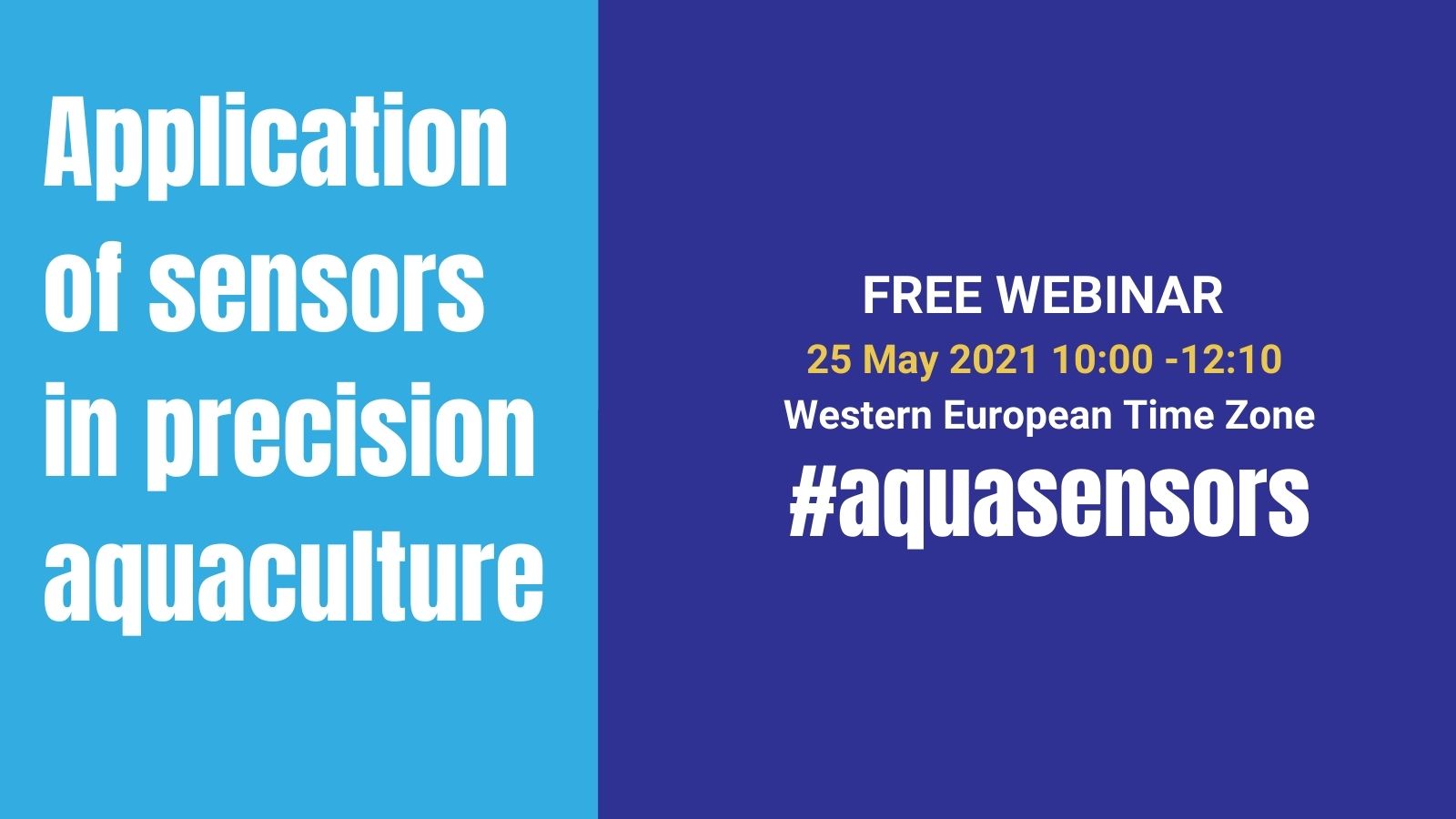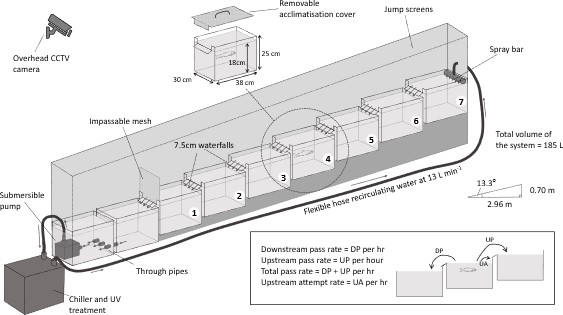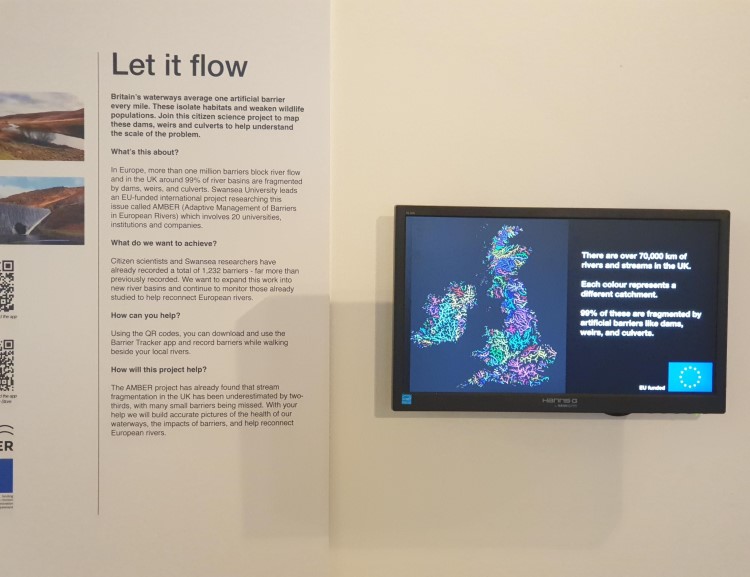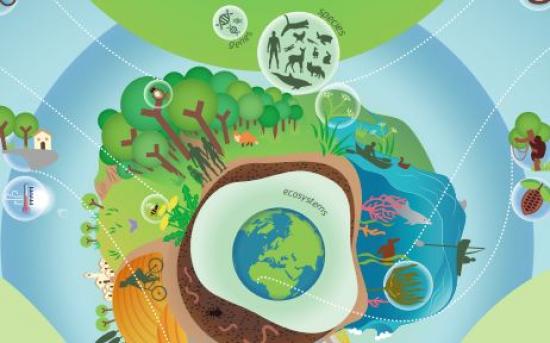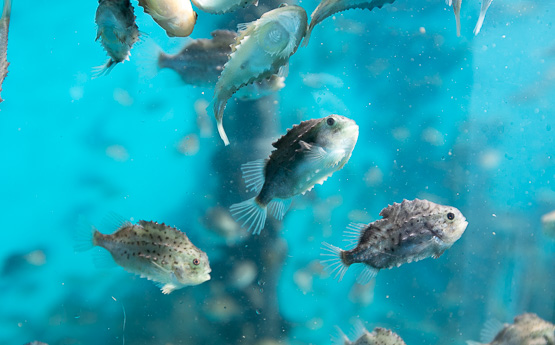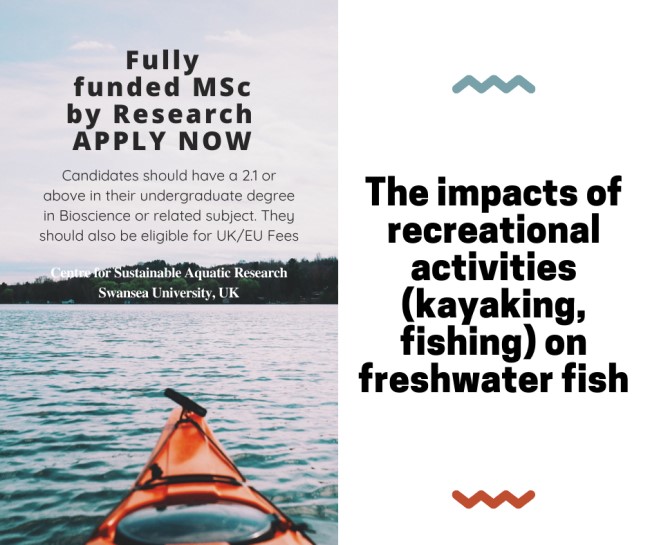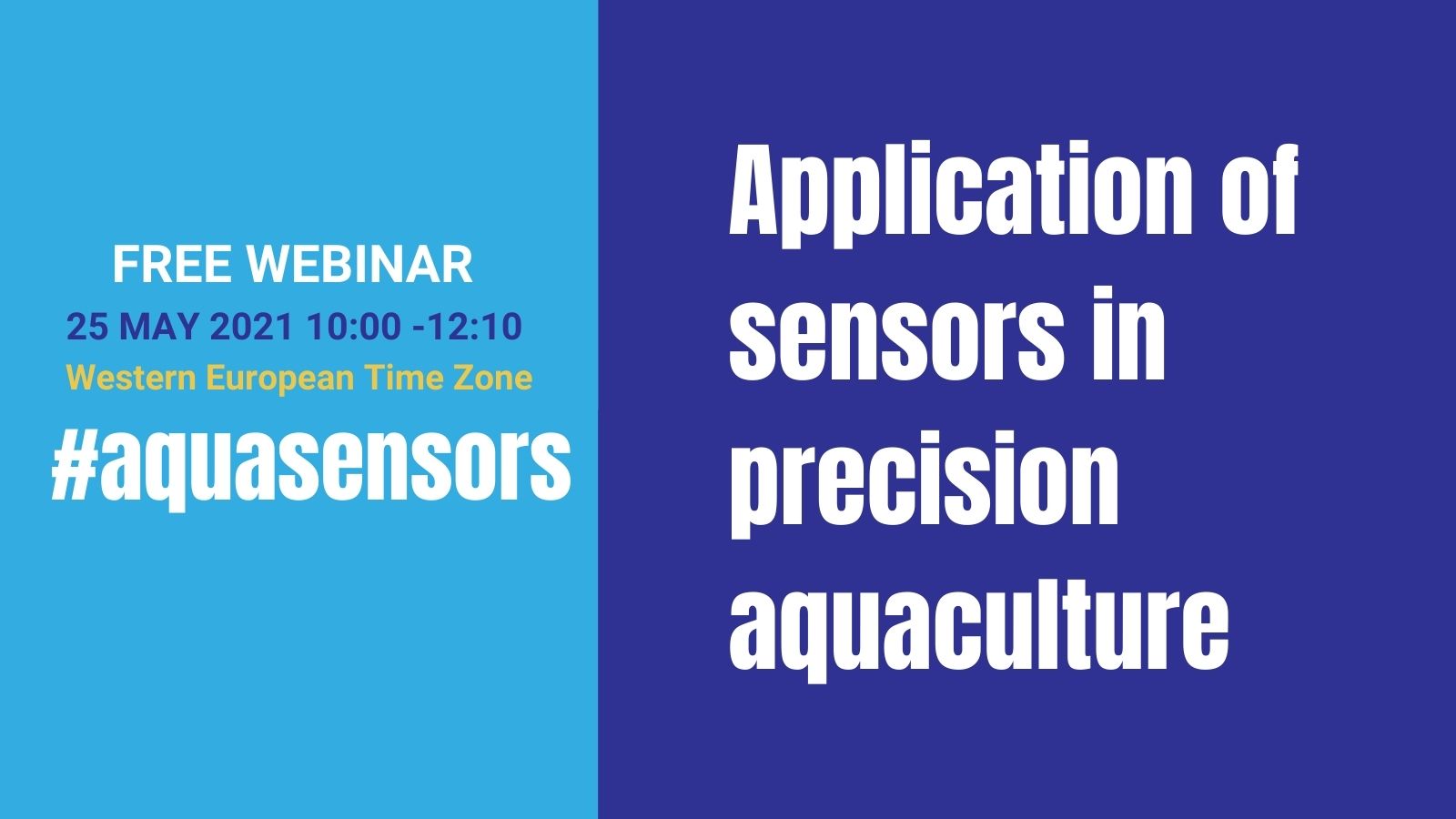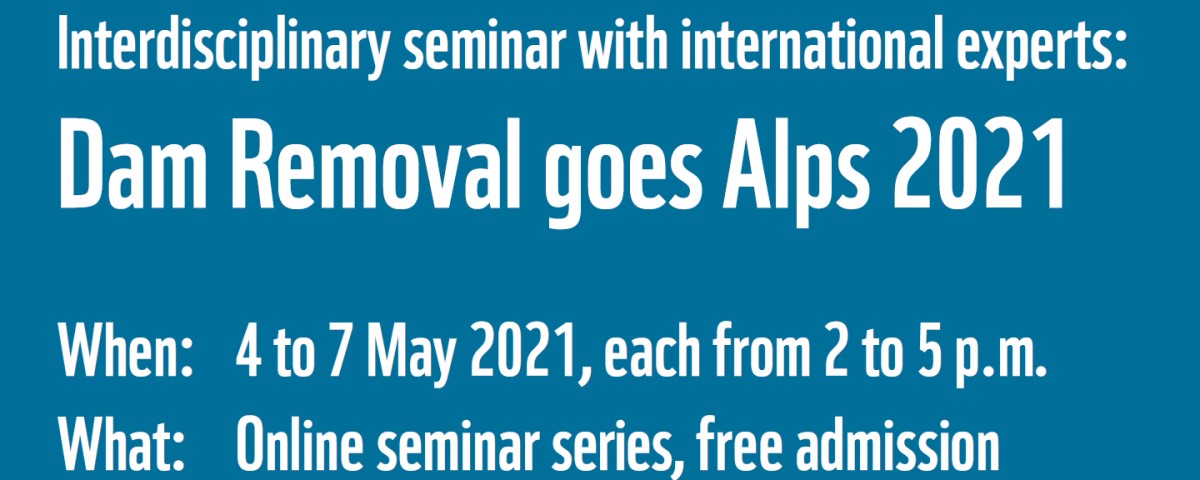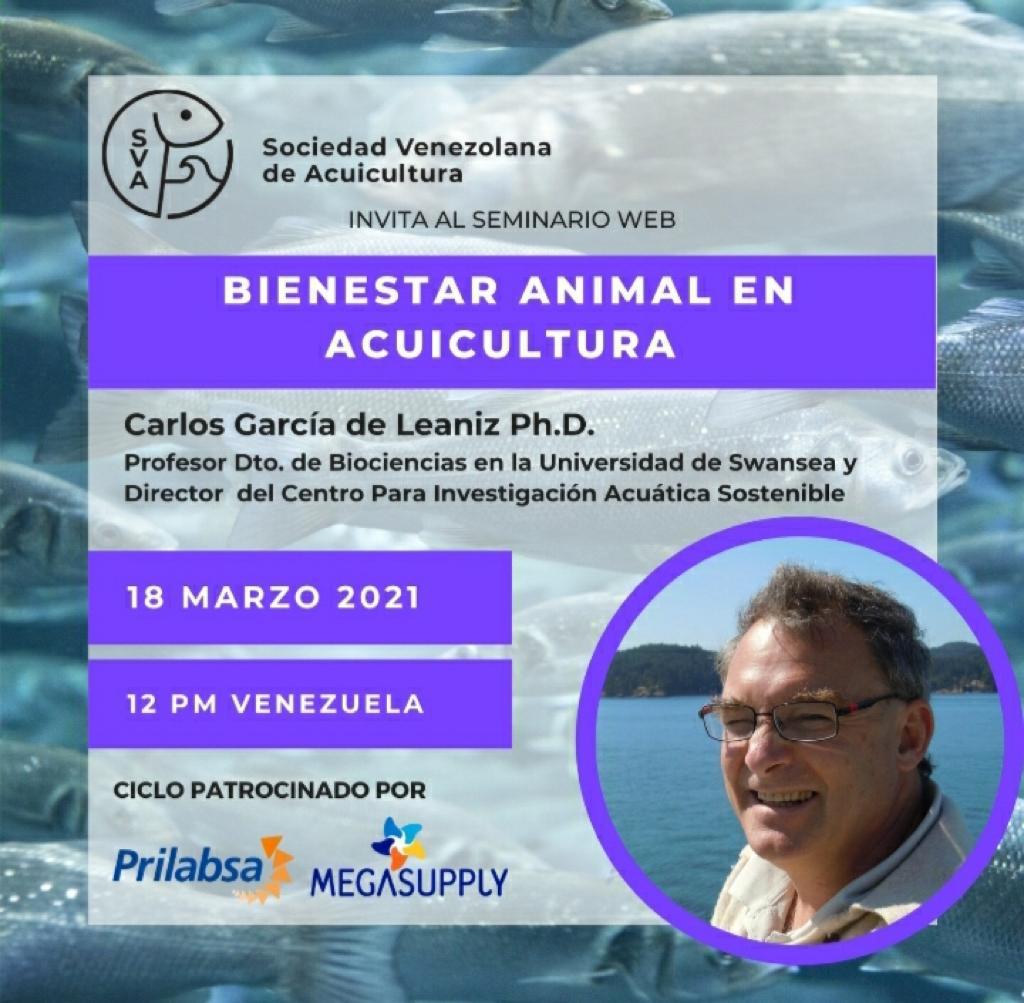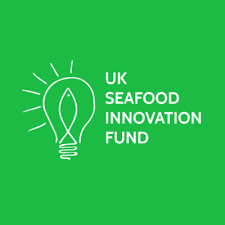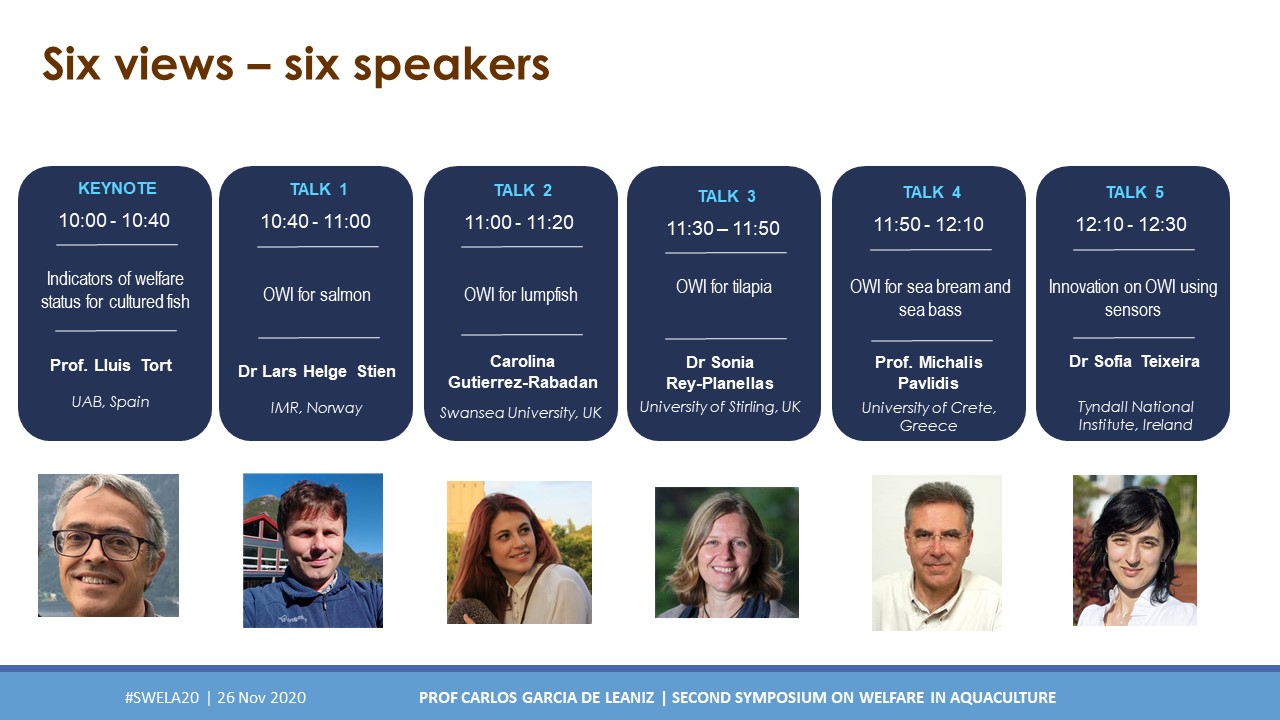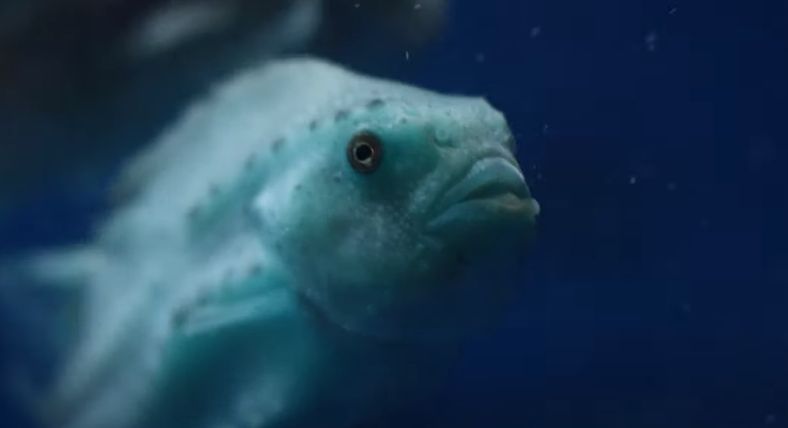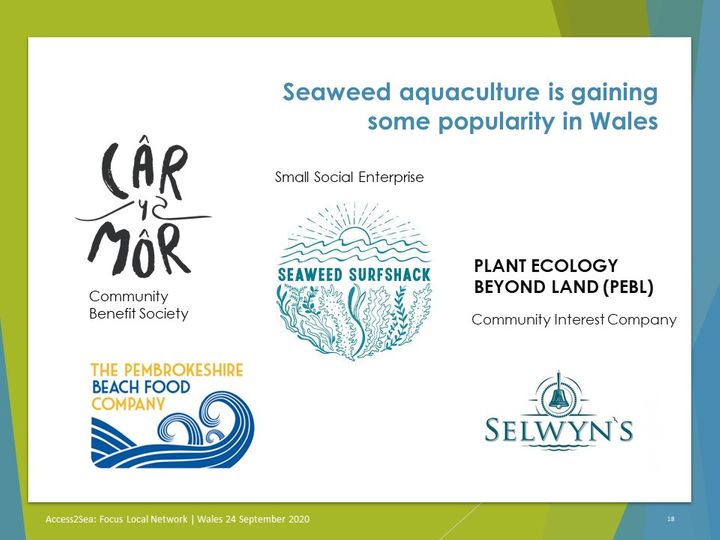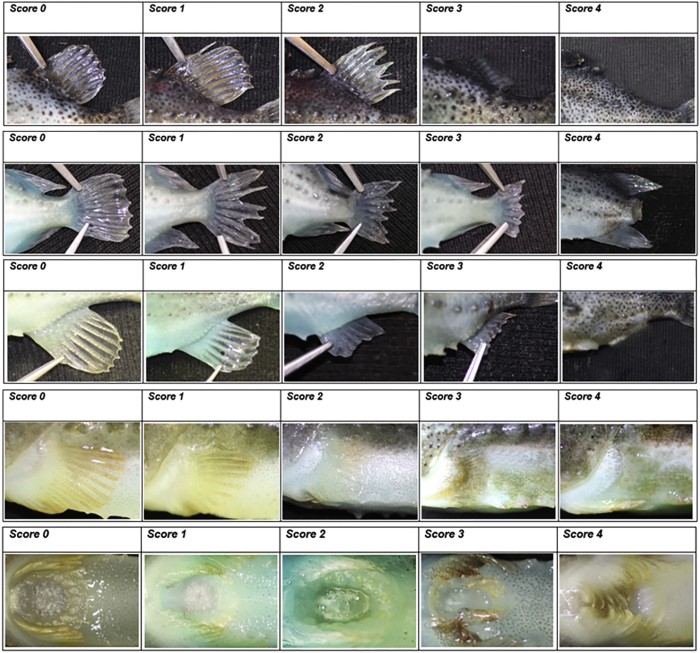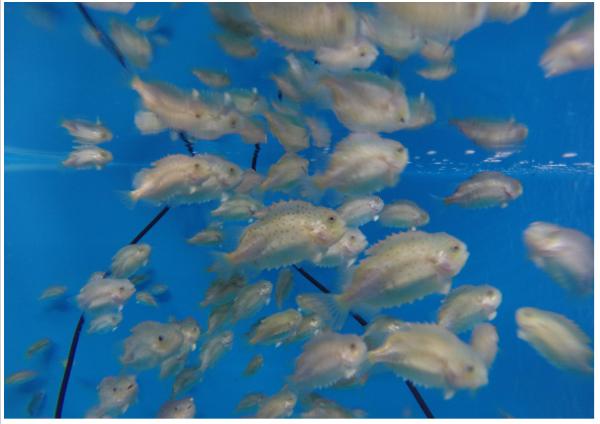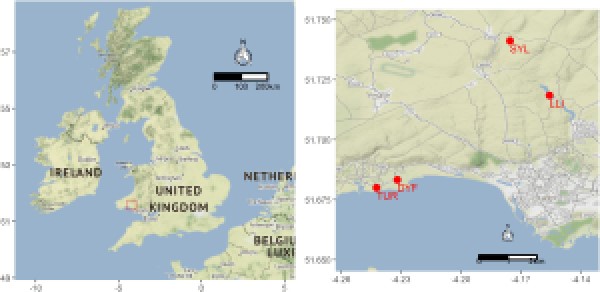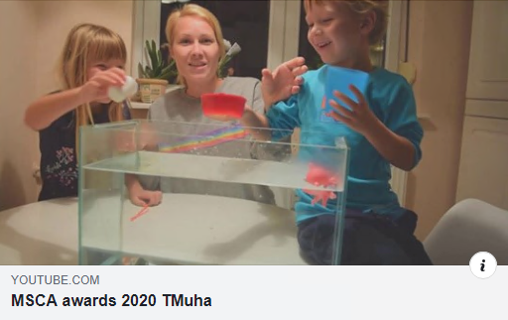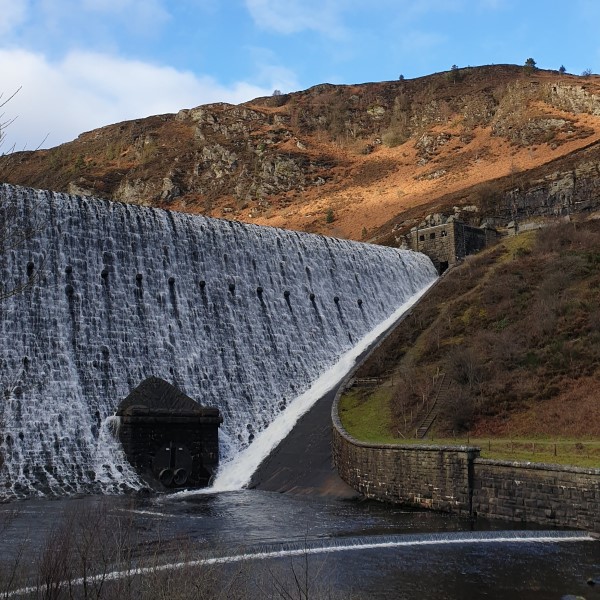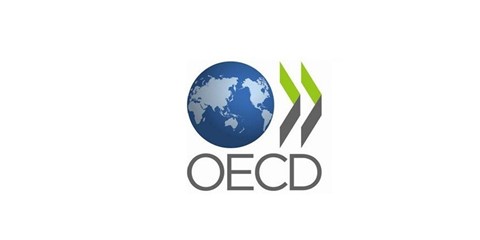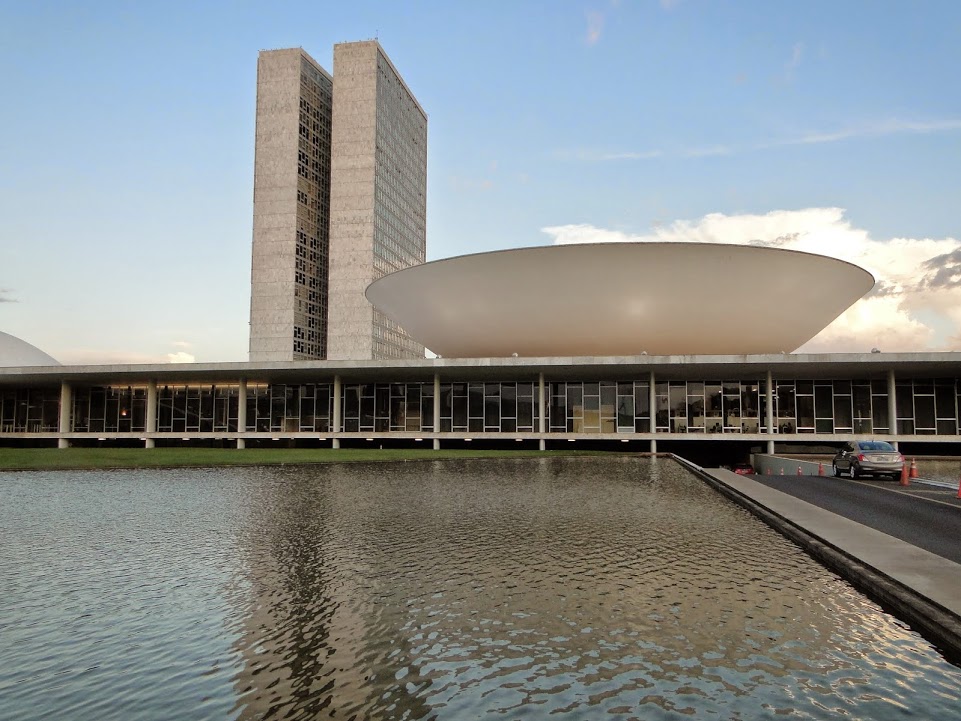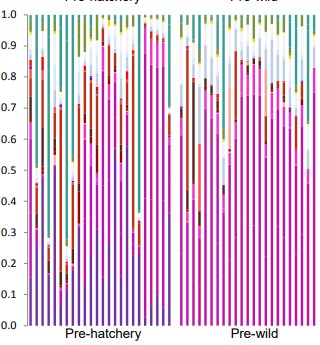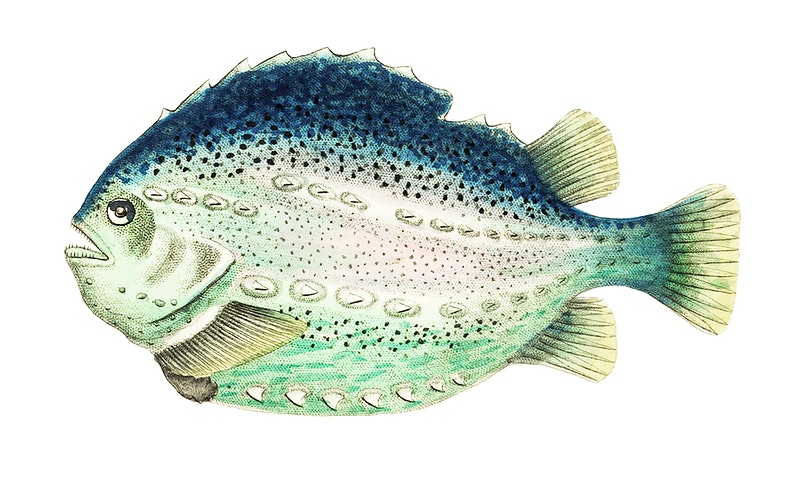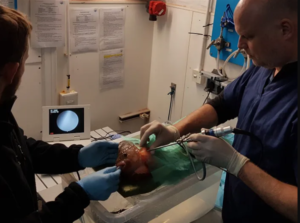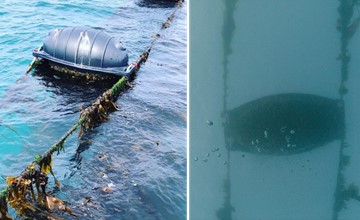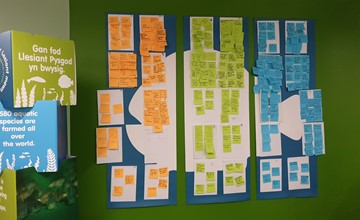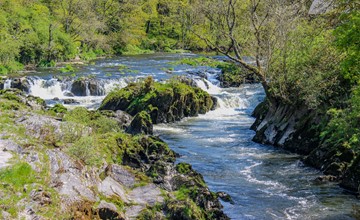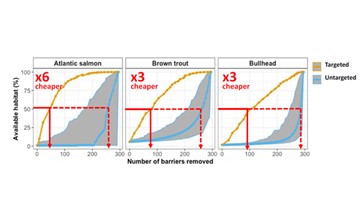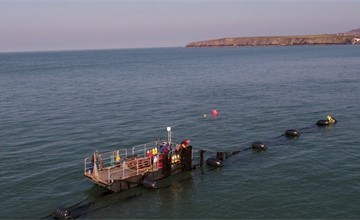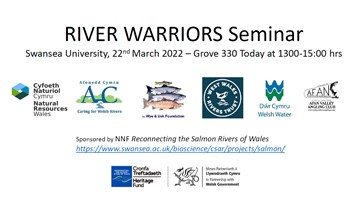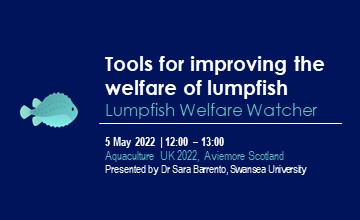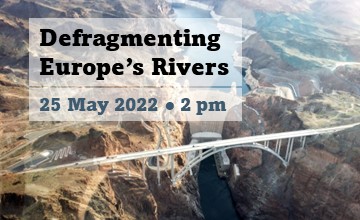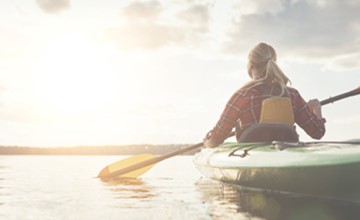Open Rivers Programme – Call for Expressions of Interest
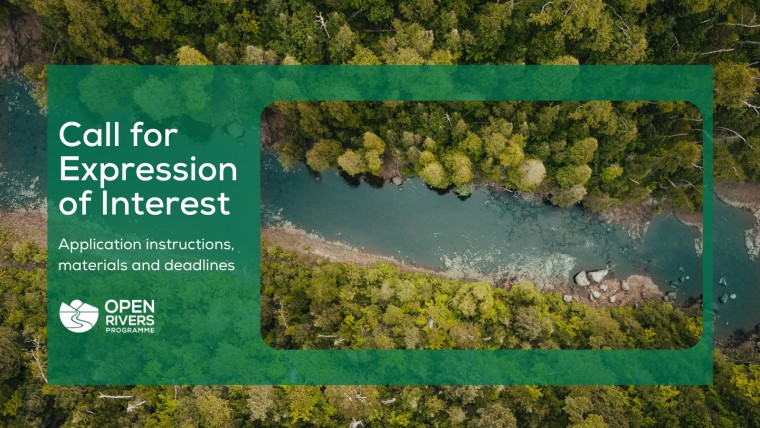
The Open Rivers Programme envisions a future of free-flowing rivers with healthy, diverse and connected ecosystems across Europe, which are enjoyed, valued, and protected by the communities that depend on them. To realize this vision, the programme offers grants to support projects that lead to the removal of dams and the restoration of river flow, function and biodiversity. The programme is inviting Expressions of Interest (EoI) for new dam removal project ideas from 19th November 2021. The EoI must be submitted online via their Grant Management System by 17:00 CET on 5th January 2022. For this first grant cycle, the programme will invite project submissions for dam removal preparatory and demolition projects that fall under grant categories A and B. For more information about the Open Rivers Programme, application eligibility criteria, grant types, application process and guidelines, and how applications will be assessed, please feel free to contact them.
29 new projects that will help ‘Team Wales’ tackle climate and nature emergency
The Reconnecting the Salmon Rivers of Wales project led by Swansea University is one of the 29 new projects that will help ‘Team Wales’ tackle climate and nature emergencies.
Funded by the Nature Networks fund this project aims to reconnect five iconic Atlantic salmon rivers in Wales (W. Cleddau, E. Cleddau, Usk, Tywi, Teifi) and revert the impacts caused by habitat fragmentation which is a leading loss of river biodiversity and responsible for the decline of salmon and other migratory fish in Wales.
A test to diagnose psychopaths can help identify fish behaviour
In November 1888, fear stalked the streets of London as the Whitechapel Murderer claimed his latest victim. The unusually gruesome attacks had puzzled investigators, so police surgeon Dr. Thomas Bond examined the victims for clues that might help reveal the killer’s identity.
This is the beginning of a great article in The Conversation showcasing our latest research in lumpfish cleaning behaviour. Our results showed that personality influences behavioural interaction between lumpfish and salmon. While some lumpfish are well suited for cleaning parasites, other individuals hinder cleaning and should not be used in aquaculture.
Bringing Eels Back to the River Thames
Glass eels used to be working-class Londoners' cheap lunch. Today, with a going rate of up to €800 per kilogram, only the wealthy can afford to eat them. This is the beginning of a great article by Hakai magazine showcasing AMBER research.
New paper on lumpfish welfare
Research led by Swansea University scientists at the Centre for Sustainable Aquatic Research (CSAR), published in Reviews in Aquaculture on the 18th of July 2021 offers 16 practical solutions for improving the welfare of lumpfish and illustrates the merits of the Delphi approach for achieving consensus among stakeholders on welfare needs, targeting research where is most needed and generating workable solutions.
LET IT FLOW – REMOVE BARRIERS, RESTORE RIVER ECOSYSTEMS
Prof. Carlos Garcia de Leaniz will be discussing THE CHALLENGES FOR THE EU NATURE RESTORATION PLAN during this live webinar. The webinar is free to attend on Thursday, July 08, 2021 • 3:00 PM.
Last year the EU Horizon 2020 project Adaptive Management of Barriers in European Rivers (AMBER) has shown (after walking 2,700 km of streams in 28 countries) that there are more than 1 million barriers in our rivers, with 10% of them being obsolete.
If we want to achieve the 25,000 km goal of free-flowing rivers, we have to tackle these barriers. The upcoming nature restoration plan (4th quarter 2021) will present an opportunity to change things for the better! Join us to discuss the state of our rivers and how to restore them.
Swansea University: LINC – The blue Economy webinar
Prof. Carlos Garcia de Leaniz gave a keynote at the LINC event, focusing on The Blue Economy, on the 21st of June 2021. The event is available to watch on YouTube and focuses on the Blue Economy which is increasingly important to Wales in economic, sustainability, and climate change terms.
Prof. Carlos Garcia de Leaniz showcased many of the activities taking place at the Centre for Sustainable Aquatic Research including the Access2Sea project pilot on lumpfish welfare.
CSAR featured article – The Fish Farmer Magazine June issue
In case you missed our latest webinar on the Application of sensors in precision aquaculture and want to read a quick overview check the latest Fish Farmer Magazine article on page 48 the free webinar is also available on our YouTube channel.
The webinar was a success with over 150 attendees from 33 countries across the world. We showcased a range of cutting-edge sensors being developed in Wales and Ireland which will support aquaculture companies in decision-making to help make ecological aquaculture an achievable target.
Sustainable use of ocean resources in Wales - free webinar 21 Jun 2021
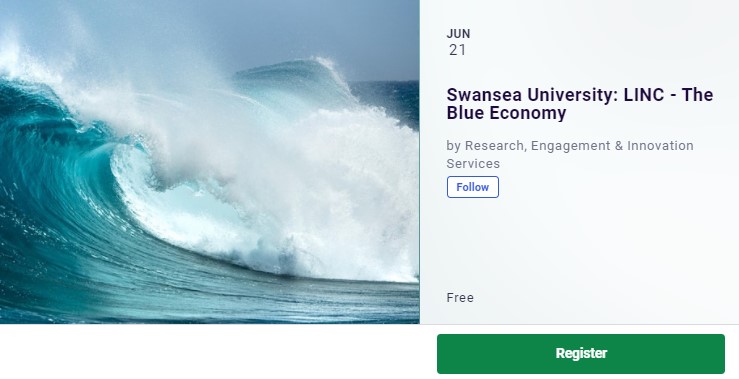
This event will showcase many of the activities taking place across the Blue Economy sector in Wales and highlight areas of focus and opportunities for collaboration. Hosted by Swansea University, Prof. Carlos Garcia de Leaniz will be presenting the Centre for Sustainable Aquatic Research and provide an overview of successful collaborations in sustainable aquaculture.
CSAR is a Centre of Excellence – we do research on aquatic organisms such as microalgae and seaweed but also many fish species such as tilapia, lumpfish, zebrafish and killifish.
Our fantastic community of researchers, educators, and industry collaborators are committed to deliver excellence in aquatic science. We focus on fish welfare, conservation, and sustainability. We care about all aquatic organisms - their habitats, and their relationship with us. We bridge the gap between students and employers, animal welfare advocates and the aquaculture industry, managers and policy makers.
AMBER at Fish Passage Conference 2021
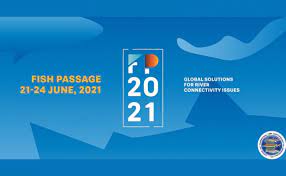
Since 2011, the annual Fish Passage Conference has brought together experts, managers, stakeholders and companies from around the world with concurrent sessions in engineering, biology, and management and social issues. With a target audience of engineers, ecologists, biologists, managers, practitioners, NGOs, private companies, consultants, students and policy and decision makers, this event aims to increase research and professional networking.
Fish Passage Conference 2021 ran from 21st to 24th June as an online webinar, covering the topics of tidal barriers and fishway solutions, policy to improve fish passage, monitoring and technology, indigenous peoples interests, impact studies on basin level, migration routes, holistic fishways, fishway evaluation, fishway attraction, fish swimming energetics, fish behaviour, downstream migration, socio-economic issues, hydropower and fish management, nature based solutions, climate change and dam removal.
As part of day 3 of the conference on 23rd June, Professor Paul Kemp delivered a talk titled “Advancing Lifetime Sustainability of River Infrastructure: a European Perspective”, presenting AMBER research and how this may support connectivity goals across Europe.
Watch videos from the conference here.
Application of sensors in precision aquaculture: webinar overview
Hosted by Swansea University’s Centre for Sustainable Aquatic Research (CSAR) in collaboration with the Waterford Institute of Technology on the 25th of May 2021, the webinar had 11 speakers presenting to an audience of over 150 participants from 33 countries.
We showcased a range of cutting-edge sensors being developed in Wales and Ireland which will support aquaculture companies in decision-making to help make ecological aquaculture an achievable target. Watch the webinar on our YouTube channel
The Applied Ecologist
Dr. Peter Jones has published a blog post in The Applied Ecologist. The blog post summarises the research contained in the paper “Selective effects of small barriers on river-resident fish" which `investigates the impact of small barriers on river-resident fish.
The AMBER consortium aims to make its research as widely available and accessible as possible. Publishing in a highly regarded blog is a great opportunity to show a wider audience how together we can “Let it Flow”!
Bridging the gap between researchers, practitioners, and policymakers, The Applied Ecologist blog, summarises research published in Journal of Applied Ecology, Ecological Solutions and Evidence and Applied Ecology Resources.
AMBER on Display!
On 22nd May, Swansea University’s new Oriel Science Centre will open in Swansea City Centre in Wales in the UK.
Entry to the venue is free and will feature two exhibitions entitled ‘Movement and Motion’ and ‘Swansea University’s response to Covid-19’ and promises to help visitors of all ages discover the wonders of the world-class research that takes place at Swansea University".
The ‘Movement and Motion’ exhibition will feature the work of AMBER’s work on river barriers, highlight the AMBER Barrier Atlas and the AMBER Barrier Tracker and demonstrate how multiple barriers obstruct the movement and motion of water bodies.
The new venue will build on the success of Oriel Science’s previous pop-up venue which welcomed almost 16,000 visitors during the 100 days it was open in 2016-2017.
We’re excited to be able to show Swansea how to “Let it Flow!”
AMBER Attends EC Workshop on Developing EU Restoration Targets
In April this year, Professor Carlos Garcia de Leaniz represented the AMBER project at the European Commission’s Workshop on developing EU Restoration Targets. In the first Consultation Workshop held in February 2021, the AMBER Barrier Atlas was noted as an essential tool to help the formulation of targets and the Member States to determine priority river basins and water bodies.
The aim of the April workshop was to present the state of play of the EU initiative, discuss possible approaches and obtain views from authorities, stakeholders, and experts in the Member States. The European Commission will put forward a proposal for legally binding EU nature restoration targets in 2021, a key element of the EU Biodiversity Strategy for 2030.
Looking after lumpfish
A recent article published by the Fish Farmer Magazine reports on the TIWL and Access2Sea research projects carried by the Centre for Sustainable Aquatic Research (CSAR) on lumpfish welfare and advances the upcoming tools being developed to better score the welfare of lumpfish.
The article is available to read on pages 48-49.
The article published in the journal Aquaculture is also free to download.
1-year MSc by Research funded by KESS-II
Fully funded opportunity to study the impacts of recreational activities (kayaking, fishing) on freshwater fish. This is a 1-year MSc by Research funded by KESS-II, NRW and Canoe Wales. Tentative start date: 1 July 2021, deadline 4 June 2021.
The successful candidate will be working at CSAR and hopefully also in the field with the FishBEE research group (Prof Carlos Garcia de Leaniz, Prof Sonia Consuegra, Dr. Peter Jones) and Prof Tavi Murray.
If you are set to get at least a 2.1, are willing to work extra hard (starting this summer, and are passionate about fish conservation you should apply, we definitely want to hear from you!
Application of Sensors in Precision Aquaculture
Swansea University in collaboration with the Waterford Institute of Technology is delighted to announce the line-up of speakers for an exciting webinar entitled Application of Sensors in Precision Aquaculture.
The webinar will feature talks from entrepreneurs, academics, and government agencies committed to supporting aquaculture companies in decision-making to help make ecological aquaculture an achievable target.
The webinar promises to be an unmissable opportunity for professionals working in the aquaculture of fish, shellfish, and seaweeds, but also across this dynamic sector.
Dam Removal Goes Alps!
From 4th to 7th May 2021, Dam Removal Europe hosted an online seminar with multiple sessions, each with a thematic focus be enriched with vivid keynote speeches, case studies, and showcases from international experts.
Over 35 international experts provided input different focus themes, and on 5th May, as part of “How to push dam removal forward?”, Professor Carlos Garcia de Leaniz moderated the breakout session “Highlighting negative effects of dams” and presented AMBER’s research during the presentation “Did the publication of the AMBER map change opinions and push removals?”.
931 people from 19 different countries registered to attend, with disciplines such as research, hydropower, and nature conservation represented at each seminar session. The presentations and videos from the seminar are available to watch.
Welfare in aquaculture: free webinar 15 Mar 2021
Join Prof. Carlos Garcia de Leaniz on this fascinating webinar on Welfare in aquaculture on Thursday the 18th of March 2021. The webinar is free to attend.
Helping the helpers by the Fish Farmer Magazine
A recent article published by the Fish Farmer magazine reports on CSAR’s research on lumpfish welfare. Our research group developed and validated a rapid Lumpfish Operational Welfare Score Index (LOWSI) in collaboration with salmon and lumpfish farmers. Jim Treasurer, the author of the article highlights the simplicity and clarity of this method to quickly assess lumpfish welfare.
Fish Farmer article is available to read on pages 46-49.
The article published in the journal Aquaculture is also free to download.
Controls needed to stop zebra mussels invading Great Britain
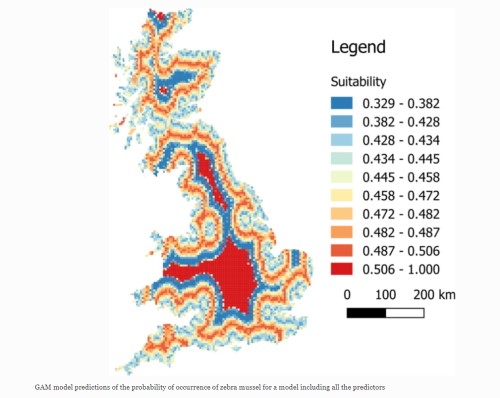
New research by Swansea University scientists found that boat ramps facilitate the dispersal of the highly invasive zebra mussel (Dreissena polymorpha). To contain the dispersion of this invasive species Dr. Marta Rodriguez-Rey and co-authors suggest the implementation of strict control measures and target monitoring around boat ramps.
Invasive bivalves can cause widespread ecological damage, but eradication has proved difficult. The zebra mussel is one of the most damaging invasive bivalves – it reproduces fast, disperses widely, and damages the economy. In Great Britain, £5 million are lost each year due to pipe fouling and damage to water infrastructures.
In this study, the research team examined the distribution of the zebra mussel in Great Britain using a model to generate maps that can predict future dispersion. The model shows that distance to boat ramps is the best way to predict the mussel’s distribution - mussels are more likely to be present within 3 km upstream of boat ramps.
Supplementary maggots in fish feed
SMARTAQUA aims to expand the aquaculture industry in Wales focusing on new products beyond food for human consumption. BioMonde is a company growing fly larvae that are used to treat chronic wounds. It may seem an unlikely collaboration at first…
The maggot excretions/secretions have been found to have antibacterial, antimicrobial, anti-inflammatory, and wound healing properties and there is potential to enrich them in order to improve the gut microbiome of fish.
Could supplementary maggots be beneficial for fish as a food source when adapted to the specific needs of a species?
The new SMARTAQUA collaboration fact sheet is now available.
SMARTAQUA: aquaculture beyond food is supported by the Welsh Government and the European Regional Development Fund.
TIWL: Tools for Improving the Welfare of Lumpfish
We are very happy to have been awarded funding from the Seafood Innovation Fund
TIWL: Tools for Improving the Welfare of Lumpfish aims to support farmers to better monitor the welfare of lumpfish consistently and accurately so that early remedial actions can be taken before welfare is severely compromised.
Lumpfish (Cyclopterus lumpus L.) are widely used for controlling sea lice in salmon farming, but their welfare is often challenged by poor husbandry, stress, and disease outbreaks, which compromise their ability to delouse salmon and causes public concern about their use in aquaculture. The tools developed in this project will help monitor and improve the welfare of lumpfish, reduce stress-related mortalities, and help make the incipient lumpfish farming industry in the UK more sustainable.
Research on river fragmentation is in the spotlight
Research led by Swansea University scientists at the Centre for Sustainable Aquatic Research (CSAR), published in Nature on the 16th of December 2020 shows that European rivers are fragmented by more than one million barriers.
The study notes that large dams get most of the attention, but small barriers do most of the damage.
The news story was featured not only in National Geographic but also in many prestigious journals across Europe:
In Germany alone, the news was covered by over 80 online articles and 30 in the print press.
In total the story was covered by over 15 countries from all continents. All news articles available on the AMBER website.
EUROPE’S RIVERS ARE BROKEN, BUT THERE IS A FIX
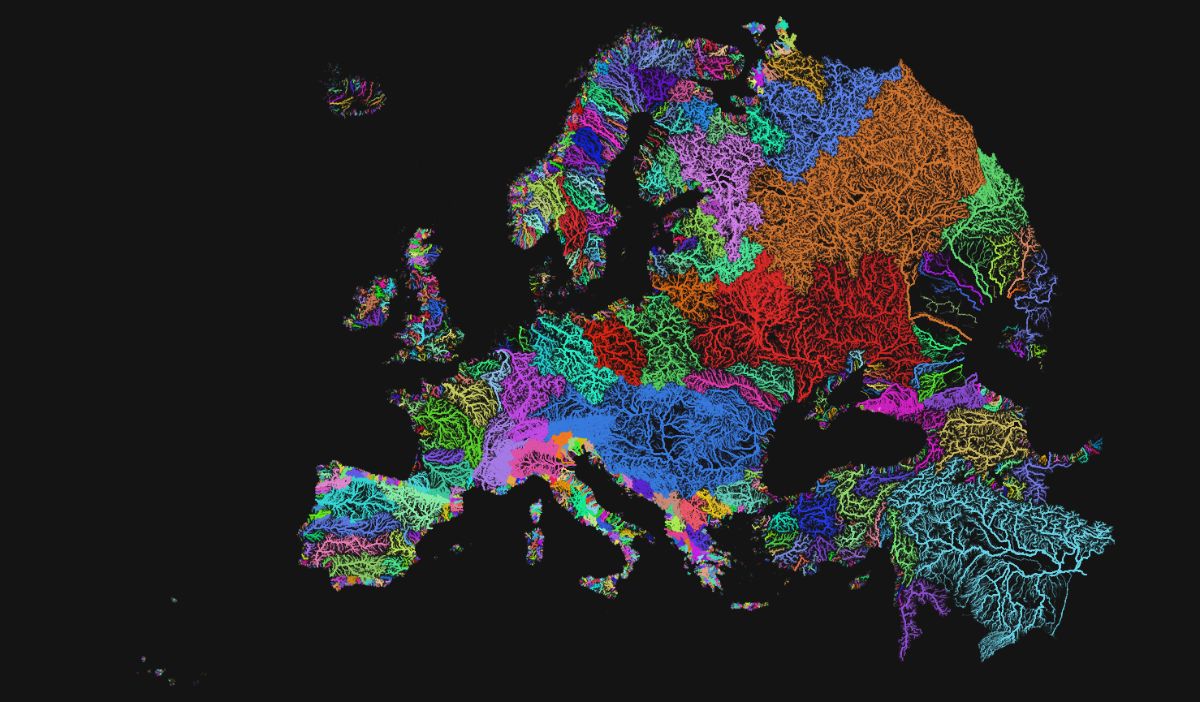
Research stemming from AMBER, a large collaborative Horizon 2020 project coordinated by Swansea University, has found that Europe’s rivers have at least 1.2 million instream barriers. The results published today in Nature show that Europe has probably some of the most fragmented rivers in the world. The study detected thousands of large dams, but also a myriad of low-head structures such as weirs, culverts, fords, sluices, and ramps which had been overlooked and are the main culprits of fragmentation.
Using barrier modelling and extensive field ground-truthing, the study estimated that there are at least 0.74 barriers per km of stream, and produced the first comprehensive pan-European barrier inventory, the AMBER Barrier Atlas. “The extent of river fragmentation in Europe is much higher than anyone had anticipated”, says Barbara Belletti, a river geomorphologist who led the study at Politecnico di Milano and is now at CNRS, the French National Centre for Scientific Research.
“Many barriers are obsolete and removing them provides unprecedented opportunities for restoration”, says Carlos de Garcia de Leaniz, AMBER’s coordinator; “our results feed directly into the new EU Biodiversity Strategy and will help to reconnect at least 25,000 km of Europe’s rivers by 2030”.
The Second Symposium on Welfare in Aquaculture #SWELA20 is available on YouTube
The FishSite - a knowledge-sharing platform with premium news, analysis, and resources for the aquaculture industries. reports on the recent Symposium on Welfare in Aquaculture delivered online on the 29th of November 2020. The article provides a summary of all the presentations and invites readers to access the recorded webinar which is now available on YouTube.
The 2nd Symposium on Welfare in Aquaculture puts fish welfare on the spotlight

Swansea University in collaboration with the University of Crete hosted the Second Symposium on Welfare in Aquaculture on the 26th of November 2020. Over 260 participants attended this free webinar where six international speakers discussed the use of operational welfare indicators in farmed fish. The webinar is now free to watch on YouTube and the talks can be downloaded from the symposium website.
While we “use” fish more than any other animal (30,000 million/year) for consumption, research, or as pets, their welfare needs are the least well known, despite increasing awareness of fish welfare in recent years. Good welfare is paramount for good health. The Symposium focused on practical welfare indicators for 5 key farmed fish species: Atlantic salmon, lumpfish, sea bream, sea bass, and tilapia. There are over 250 species of fish farmed globally but their welfare requirements are in many cases unique to each species, and difficult to measure. There is a real need to develop operational welfare indicators that can be used by fish farmers under commercial conditions.
How to improve stream connectivity

The AMBER project has recently published three policy briefs outlining the tools developed to improve stream connectivity and inform the new European Biodiversity strategy to open up 25,000km of free-flowing rivers in Europe by 2030. Policy Brief 1 take-home messages are clear: 1) most barriers to free-flow are small structures; 2) Loss of connectivity depends mostly on the number and location of barriers, not on their height; 3) many barriers in Europe are old and obsolete and provide opportunities for restoring connectivity. Policy brief 2 outlines some of the tools developed to help resource managers quantify stream fragmentation, assess barrier impacts and benefits, and make better, informed decisions on existing and future barriers based on what-if scenarios. While Policy Brief 3 summarises the impacts of artificial instream barriers on the biodiversity of running waters. It also points out many impacts of barriers on non-fish and plants which are usually ignored.
The FishSite reports on #SWELA20
The Centre for Sustainable Aquatic Research is organizing the Second Symposium on Welfare in Aquaculture (SWELA 2020), which is free to attend online on the 26th November. The FishSite - a knowledge-sharing platform with premium news, analysis and resources for the aquaculture industries - reported on this event highlighting the role of the Access2Sea project.
- Read FishSite news story
- Register to the symposium
- Twitter: #SWELA20
CSAR at Swansea Science Festival 2020
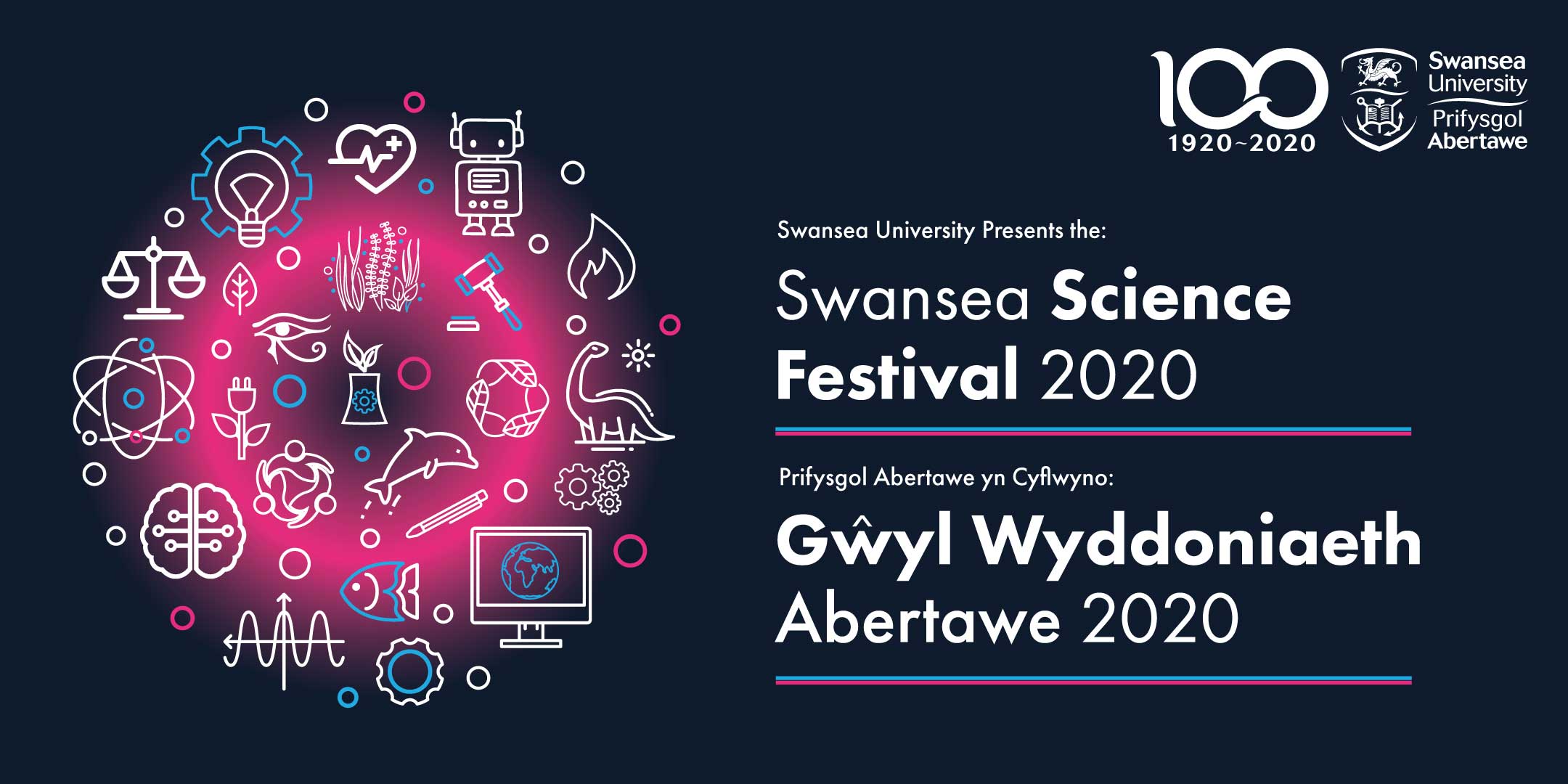
The Centre for Sustainable Aquatic Research had the pleasure to be part of the Welsh largest free science festival last Saturday (24 Oct 2020). We were live but virtual, in the fringe stage. We had the opportunity to launch our video where we showcased our research and unique aquaculture facilities in the UK. Participants were very engaged and had many questions about fish invasive species (brown trout) in the Falklands. Jess Minnette is finishing her PhD and had the opportunity to share her exciting research in this remote South Atlantic archipelago. There were also many questions about sustainable diets in aquaculture and the role of fats such as omega-3 from microalgae oil. Some concerns were raised about heavy metals in fish and the differences between farmed fish and wild fish. Sergio Trevi had the opportunity to introduce his PhD research on farmed tilapia. Dr Sara Barrento explained the differences between macro and microalgae and introduced the Access2Sea project. While Paul Howes shared some exciting news about the new biophilic building project at Swansea.
CSAR at the Welsh Government Marine Planning Stakeholder Reference Group
The Second Welsh Local Focus Network (LFN) took place during the Welsh Government Marine Planning Stakeholder Reference Group. Dr Sara Barrento did a presentation on the 24th of September during the periodical webinar, where she introduced the Access2Sea project and the aims of the LFN. The Welsh Government Marine Planning Stakeholder Reference Group aims to engage and advise in the development and implementation of evidence and approaches for the spatial management of marine natural resources in Wales. This was the ideal venue to introduce the Access2Sea project and establish the LFN.
More info about the Access2Sea project
3D Aquaculture Wales: seaweed farming
The First Access2Sea Welsh Local Focus Network took place in the end of July, the topic of this first event was 3D Aquaculture Wales: seaweed farming. Three Welsh seaweed companies were present during the meeting and provided meaningful insight about the challenges and opportunities seaweed farming is facing. Dr Sara Barrento did a presentation introducing the Access2Sea project and the aims of the Local Focus Network.
GIVE AWAY: Industry grade RAS
Operational Welfare Score Index for farmed lumpfish
Lumpfish (Cyclopterus lumpus L.) are widely used for controlling sea lice in salmon farming, but their welfare is often challenged by poor husbandry, stress, and disease outbreaks, which compromise their ability to delouse salmon and cause public concern. In this new study by Carolina Gutierrez-Rabadan and co-authors present the first validated, peer-reviewed operational index of welfare for farmed lumpfish; report the results for 6 commercial sites and shows that 29% of lumpfish have compromised or poor welfare and identify the main welfare problems and suggest remedial actions.
The research paper is freely available
Novel qPCR assay to detect and quantify Nucleospora cyclopteri in lumpfish
Dr Tamsyn Uren Webster and co-authors have recently developed a novel qPCR assay to detect and quantify Nucleospora cyclopteri in lumpfish. This novel assay identified high prevalence of the infection among asymptomatic fish. All analysed tissues were affected, including blood, suggesting systemic infection. Asymptomatic lumpfish had much lower parasite loads than those with macroscopic signs of infection.
The research paper is freely available
Cortisol disrupts the gut microbiome in salmon
Cortisol - a stress related hormone, disrupts the gut microbiome in salmon. This can cause poor fish health - check out our new publication by Tamsyn Uren Webster and co-authors. This paper also highlights the value of using non-invasive faecal samples to monitor stress, and simultaneous determination of cortisol and stress-responsive bacteria.
New paper on the Highly Invasive Topmouth Gudgeon (Pseudorasbora parva)
Invasive species reproduce a lot, grow fast, and they are not fussy about food. Check our article on the aquatic invasive species Topmouth Gudgeon, Matteo Rolla and co-authors show SIA can be used to prioritize eradication measures
A drop in the ocean
A drop in the ocean: Monitoring fish communities in spawning areas using environmental DNA. We are very happy to share this new publication. Congratulations to Frances Ratcliff and co-authors. Please check the OpenAccess article
Nature make us happy: let’s bring it to our cities
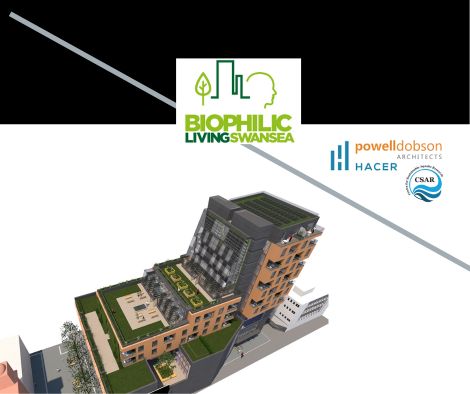
The Biophilic Living Swansea project aims to bring nature into our living urban space and make us happier and healthier.
We spend 90% of our lives in buildings. If you think this is because of the coronavirus, think again – the data was collected in the early nineties in the USA. With the recent lockdowns our worlds have suddenly shrunk to the size of our homes – if you have one. Although it seems we are an indoor modern society, we know walks in the park, hikes in the forest and strolls along the beach relieve stress. The lockdown has proven that spending time in nature is essential for our wellbeing and mental health - it has a soothing effect, and we really need this in times of COVID and beyond.
Should we then re-think the design of our buildings? BIOPHILIC LIVING AT PICTON YARD SWANSEA is committed to implement this vision of conserving and celebrating nature in urban spaces. The Centre for Sustainable Aquatic Research (CSAR) is proud to be part of this project. This is a radical new approach to living and working in the city, it will provide affordable new homes and workspaces alongside a community urban farm in the heart of Swansea. This farm will include greens but also fish.
CSAR will be involve in the design and setting up of an aquaponic system - the combination of aquaculture (raising fish) and hydroponics (the soil-less growing of plants) that grows fish and plants together in one integrated system.
This project by Hacer Developments has been designed by Powell Dobson Architects in Swansea. The concept is the result of extensive collaborative working among a range of local organisations, including Swansea University, the Active Building Centre, Public Health Wales, Swansea Community Farm and Sero Homes Ltd.
Meet Dr Teja Muha: Marie Skłodowska-Curie Awards finalists
We are super proud of Dr Teja Muha, she is a finalist to the Marie Skłodowska-Curie Actions 2020 HR Awards to honour the outstanding achievements and excellence of the MSCA fellows, the MSCA 2020.HR AWARDS will be awarded on the 19th of June.
Dr Teja Muha did her PhD through the Aquainvad-ED project at Swansea University, Centre for Sustainable Aquatic Research. She developed and optimised novel methods (environmental DNA barcoding and metabarcoding) for the early detection of freshwater and marine aquatic invasive species.
Check the YouTube video here
RECONNECTING EUROPE'S RIVERS: WHERE DO WE START?
Join Prof. Garcia de Leaniz on this fascinating talk where he will reveal the true extent of river fragmentation and provide meaningful information to help managers reconnect rivers across Europe.
__________________________________________________
WHERE:
Bath Royal Literary and Scientific Institution
WHEN:
Thursday 19 March 2020
7:30 pm
PRICE:
Visitors £5, Members & Students £2
Picture credits: Sara Barrento
___________________________________________________
#rivers #conservation #management #atlas #barriers #dams
Fragmentation of migratory fishing habitat is increasing worldwide
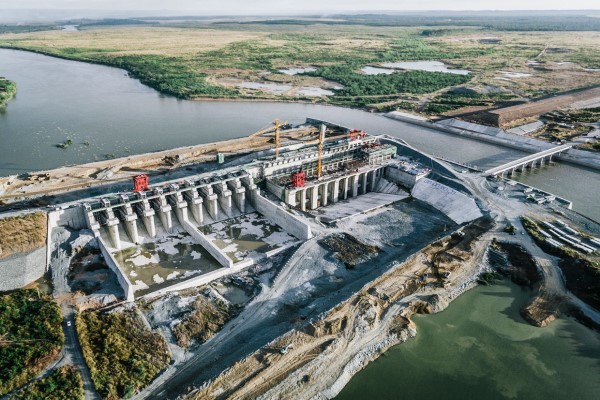
One of the main newspapers in The Netherlands - de Volkskrant - highlights the work carried out by Prof. Carlos Garcia de Leaniz on river fragmentation.
Our rivers have barriers - they are disconnected from the sea. Weirs, small hydropower or big dams provide water, irrigation, energy production, and flood protection. But barriers block rivers, fragment waterways, isolate habitats and weaken wildlife populations. In just 3 years, AMBER delivered the first Atlas of river barriers across Europe.
Below is a brief translation from this news article; the original online edition (3rd February 2020) can be found here
"Because the authors only look at the effect of large dams, they underestimate the actual extent of the fragmentation, reacts Carlos Garcia de Leaniz, professor of aquatic life sciences at the University of Swansea. If data on small dams are included in the overview, it will appear that the degree of fragmentation is greater. "We also have to watch out for small dams." Despite the "inevitable" limitations, he is positive about the study: "Such a global overview has never been made before."
Collaboration with the Department of Animal Breeding (Madrid, Spain)
Professor Sonia Consuegra has been awarded a four-month OECD Research Fellowship to carry research at Instituto Nacional de Investigación y Tecnología Agraria y Alimentaria (INIA), Department of Animal Breeding (Madrid, Spain)
Newton-UK Brazil exchange workshop
Professor Sonia Consuegra has been invited by the British Academy to participate in a Newton UK-Brazil International workshop at Brasilia (Brazil) on 9-12 March 2020
New publication on salmon microbiome
Dr. Tamsyn UrenWebster had the following paper accepted for publication in Molecular Ecology: Environmental plasticity and colonisation history in the Atlantic salmon microbiome: a translocation experiment.
Welfare Index for farmed lumpfish
KESS-II PhD student Carolina Gutierrez -Rabadan was invited to give a talk at a Fish Welfare workshop at the University of Bergen (Norway) on “Development and validation of an Operational Welfare Index for farmed lumpfish” 28th January 2020
European Stakeholder Workshop on Fish-friendly Hydropower
Professor Carlos Garcia de Leaniz will be presenting The AMBER Barrier Atlas: an overview of stream fragmentation in Europe on the 28th of January at The European Stakeholder Workshop on Fish-friendly Hydropower in Brussels.
This event will serve as a platform for consultation and exchange between FIThydro scientists, policy-makers and technical experts working on the assessment of impacts from hydropower plants and the planning of mitigation measures.
_________________________________________
WHERE: Brussels
WHEN: 28-29 January 2020
Picture credits: Sara Barrento
__________________________________________
#rivers #conservation #management #atlas #barriers #workshop
Where are they? - Our recent PhD graduates
We are very proud of our recent PhD graduates - you will be missed.
We wish you all the best of luck and success in your research careers.
- Dr Matteo Rolla will begin a postdoc at University of Windsor, Great Lakes Institute for Environmental Research (Canada)
- Dr. Waldir Miron-Berbel will start a postdoc at University of Oklahoma (USA)
- Dr. Ben Whittaker is doing a postdoc at Guelph University (Canada)
- Dr. Teja Muha is working for the company Bia Separations CRO, Slovenia
- Dr. Chloe Robinson is doing a postdoc at Guelph University (Canada)
- Dr. Marta Rodriguez-Rey is doing a postdoc at University of Alcala de Henares (Spain)
- Dr. Becky Pawluk is doing a postdoc at University of Bath (UK)
Managing dams in an adaptive way
Researchers from Swansea University in the UK introduce the AMBER project which looks at the Adaptive Management of Barriers in European Rivers.
The AMBER team have been featured in the October 2019 Water Power magazine highlighting the aims of the project and some case studies.
"As AMBER enters its final year, achieving legacy becomes paramount so that lessons learnt can be incorporated into policy. In this sense, all the data collected during the project, as well as the AMBER tools that have been developed, will be made freely available in 2020. AMBER is also championing the protection of the remaining pristine river habitats in Europe and encouraging a new river culture. While Europe has lost most of its free-flowing rivers, a few relatively unfragmented rivers still exist, most notably in the Balkans. These river sanctuaries need to be vigorously protected. With increasing demands for water use and hydropower, it is important that lessons learned from AMBER are used to avoid past mistakes and manage dams in adaptive, smarter and more environmentally respectful ways."

For more information see:
https://secure.viewer.zmags.com/publication/d48bf23c
###########################################################################################################
KEYHOLE SURGERY CAN IMPROVE LUMPFISH WELFARE
In this publication, the authors describe how they adapted the use of laparoscopy (keyhole surgery) to obtain kidney and gonad biopsies from male lumpfish. This has allowed advanced health assessment, direct visualisation of reproductive status, and PCR screening for selected pathogens to pre-assess their suitability as broodstock.
The research paper is freely available.
News article from the AMBER project
Jess Minett, PhD student from CSAR, Swansea University aims to answer key questions about the abundance and distribution of brown trout across the islands aswell as their feeding habits and their movement.
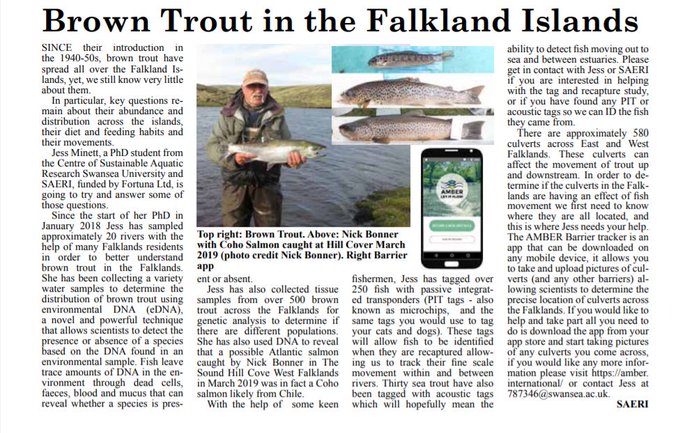
For more information see: https://amber.international/
###########################################################################################################
Prizes won for best dissertations in fisheries and aquaculture
The 5m Publishing Prizes for Swansea University’s best undergraduate dissertations on aquaculture and fisheries were presented on 26 July as part of the university’s graduation ceremony.
"The awards were presented to Ellis Larcombe and Charlotte Spreadbury: future stars of the aquaculture sector?"
“I am impressed by the quality of the undergraduates’ work and its potential for application to increase sustainability in the aquaculture industry,” said Nigel Balmforth, 5m’s director of publishing, who presented the award certificates and prizes. “It is a pleasure to support these awards, and the continuing cutting-edge work of Swansea University and their Centre for Sustainable Aquatic Research”.
For more information see:
https://thefishsite.com/articles/lumpfish-paper-wins-fish-site-award
###########################################################################################################
How keyhole surgery is improving lumpfish welfare and production techniques
A veterinarian at Swansea’s Centre for Sustainable Aquatic Research has pioneered the use of a non-destructive method to assess the health of lumpfish broodstock.
Utilising his experience with ornamental fish in public aquaria, CSAR’s consultant veterinarian, Dr Richard Lloyd, has adapted the use of laparoscopy (keyhole surgery) to obtain kidney and gonad biopsies from all their male lumpfish over the last two broodstock seasons. This has allowed advanced health assessment, direct visualisation of reproductive status and PCR screening for selected pathogens to pre-assess their suitability as broodstock.
"Laparoscopy (keyhole surgery) being performed on an anesthetised lumpfish"
For more information see:
https://thefishsite.com/articles/how-keyhole-surgery-is-improving-lumpfish-welfare-and-production-techniques
For more information on the related SMARTAQUA project please see http://smartaqua.org.uk/
###########################################################################################################
A new scientific paper from the SMARTAQUA team
This new study identifies two genes in Nile tilapia related to the expression of stress in crowded environments: sstl and fosab. This is good news for breeders as it might be possible to selectively breed fish that perform better under crowded conditions.
Aquaculture has been aiming towards intensification – grow more with less. In the case of fish farming, this involves more fish in less space, with less water, and less feed. This requires careful selection of species and individuals that will perform well in crowded environments. Fish domestication changes social behaviour and aggression is one of the key behaviours in crowded spaces. In the case of Nile tilapia high stocking density causes a shift from antagonistic (aggressive) to shoaling behaviour.
The hypothesis was that rearing density would influence the frequency of aggression – individuals with different aggression levels and stress‐coping styles would differ in the expression of key genes involved in the stress response. We concluded that the crowding inhibits aggressive behaviour in Nile tilapia and results in changes in the expression of stress-related genes that accompany the shift from social hierarchies maintained by agonistic interactions at low density, to shoaling at high density.
D. Rodriguez-Barreto, O. Rey, T. Uren Webster, G. Castaldo, S. Consuegra, C. Garcia de Leaniz, Transcriptomic response to aquaculture intensification in Nile tilapia, (2019). doi:10.6084/m9.figshare.8198408.v1.
For more information on the related SMARTAQUA project please see http://smartaqua.org.uk/
#######################################################################################################
News release - Salmon expert demands controls on catch‑and‑release angling
Scientist Carlos Garcia de Leaniz, a professor in aquatic biology and Director of CSAR, warned that fishing for salmon – even on a catch-and-release basis – is contributing to its decline.
He said this generation’s grandchildren may grow up unaware that salmon was once wild rather than farmed.
He said: “It’s a scandal, an absolute scandal. To think that something that has been part of our culture for perhaps 100,000 or 200,000 years can disappear in a matter of a few decades is just tragic. It is absolutely tragic.
“We meet with resistance from governments who just refuse to see it. They delude themselves with catch quotas of five, 20, 30 fish.
“Can you imagine a conservation programme for, say, the tiger, cheetah, or black rhino where hunters are allowed to catch five or 10 individuals? Or even to engage in catch-and-release? How can we contemplate a scheme where we catch fish simply for fun and put them back in the river in the hope they are going to survive? Of course they are damaged by it.
“Catch-and-release is just like shooting black rhinos with darts, and only for fun. Would you do it?
“The problem is that, regardless of the direct and indirect mortality it may cause, it masks the real problem and distracts people from the real issue, which is that wild populations are going extinct across the range, particularly at the southern edge.
“Catch-and-release is perhaps a cynical way of saying it’s business as usual, and it allows anglers to keep at it – since fish are ‘released’ they can be caught again.
For more information see:
https://www.sundaypost.com/fp/scotlands-natural-disaster-our-grandkids-may-never-know-salmon-once-swam-in-rivers-how-will-they-ever-forgive-us/
https://www.thetimes.co.uk/edition/scotland/salmon-expert-demands-controls-on-catch-and-release-angling-5wdr5pntm
#####################################################################################################
NEW PUBLICATION - Neophobia & stress-coping styles in tilapia
Farmed fish are typically reared at densities much higher than those observed in the wild, but to what extent crowding results in abnormal behaviours that can impact welfare and stress coping styles is subject to debate. Neophobia (i.e. fear of the ‘new’) is thought to be adaptive under natural conditions by limiting risks, but it is potentially maladapted in captivity, where there are no predators or novel foods. We reared juvenile Nile tilapia (Oreochromis niloticus) for six weeks at either high (50 g l-1) or low density (14 g l-1), assessed the extent of skin and eye darkening (two proxies of chronic stress), and exposed them to a novel object in an open test arena, with and without cover, to assess the effects of density on neophobia and stress coping styles. Fish reared at high density were darker, more neophobic, less aggressive, less mobile and less likely to take risks than those reared at low density, and these effects were exacerbated when no cover was available. Thus, the reactive coping style shown by fish at high density was very different from the proactive coping style shown by fish at low density. Our findings provide novel insights into the plasticity of fish behaviour and the effects of aquaculture intensification on one of the world’s oldest farmed and most invasive fish, and highlight the importance of considering context. Crowding could have a positive effect on the welfare of tilapia by reducing aggressive behaviour, but it can also make fish chronically stressed and more fearful, which could make them less invasive.
Champneys T, Castaldo G, Consuegra S, Garcia de Leaniz C. 2018 Density dependent changes in neophobia and stress-coping styles in the world’s oldest farmed fish. R. Soc. open sci. 5: 181473. https://royalsocietypublishing.org/doi/pdf/10.1098/rsos.181473
For more information on the related SMARTAQUA project please see http://smartaqua.org.uk/
https://aquaculturemag.com/2019/01/19/stocking-density-can-impact-stress-coping-styles-in-tilapia/
#######################################################################################################
NEW PUBLICATION - Genetic differentiation of lumpfish
Demand for lumpfish (Cyclopterus lumpus) has increased exponentially over the last decade, both for their roe, which is used as a caviar substitute, and increasingly also as cleaner fish to control sea lice in salmon farming. The species is classified as Near Threatened by the IUCN and there are growing concerns that over-exploitation of wild stocks and translocation of hatchery-reared lumpfish may compromise the genetic diversity of native populations. We carried out a comparative analysis of genetic and phenotypic variation across the species’ range to estimate the level of genetic and phenotypic differentiation, and determined patterns of gene flow at spatial scales relevant to management.
We found five genetically distinct groups located in the West Atlantic (USA and Canada), Mid-Atlantic (Iceland), East Atlantic (Faroe Islands, Ireland, Scotland, Norway and Denmark), English Channel (England) and Baltic Sea (Sweden). Significant phenotypic differences were also found, with Baltic lumpfish growing more slowly, attaining a higher condition factor and maturing at a smaller size than North Atlantic lumpfish. Estimates of effective population size were consistently low across the North East Atlantic (Iceland, Faroe Islands and Norway), the area where most wild lumpfish are fished for their roe, and also for the aquaculture industry. Our study suggests that some lumpfish populations are very small and have low genetic diversity, which makes them particularly vulnerable to over-exploitation and genetic introgression. To protect them we advocate curtailing fishing effort, closing the breeding cycle of the species in captivity to reduce dependence on wild stocks, restricting the translocation of genetically distinct populations, and limiting the risk of farm escapes.
Whittaker BA, Consuegra S, Garcia de Leaniz C. 2018. Genetic and phenotypic differentiation of lumpfish (Cyclopterus lumpus) across the North Atlantic: implications for conservation and aquaculture. PeerJ 6:e5974 https://doi.org/10.7717/peerj.5974
For more information on the related SMARTAQUA project please see http://smartaqua.org.uk/
#####################################################################################################





